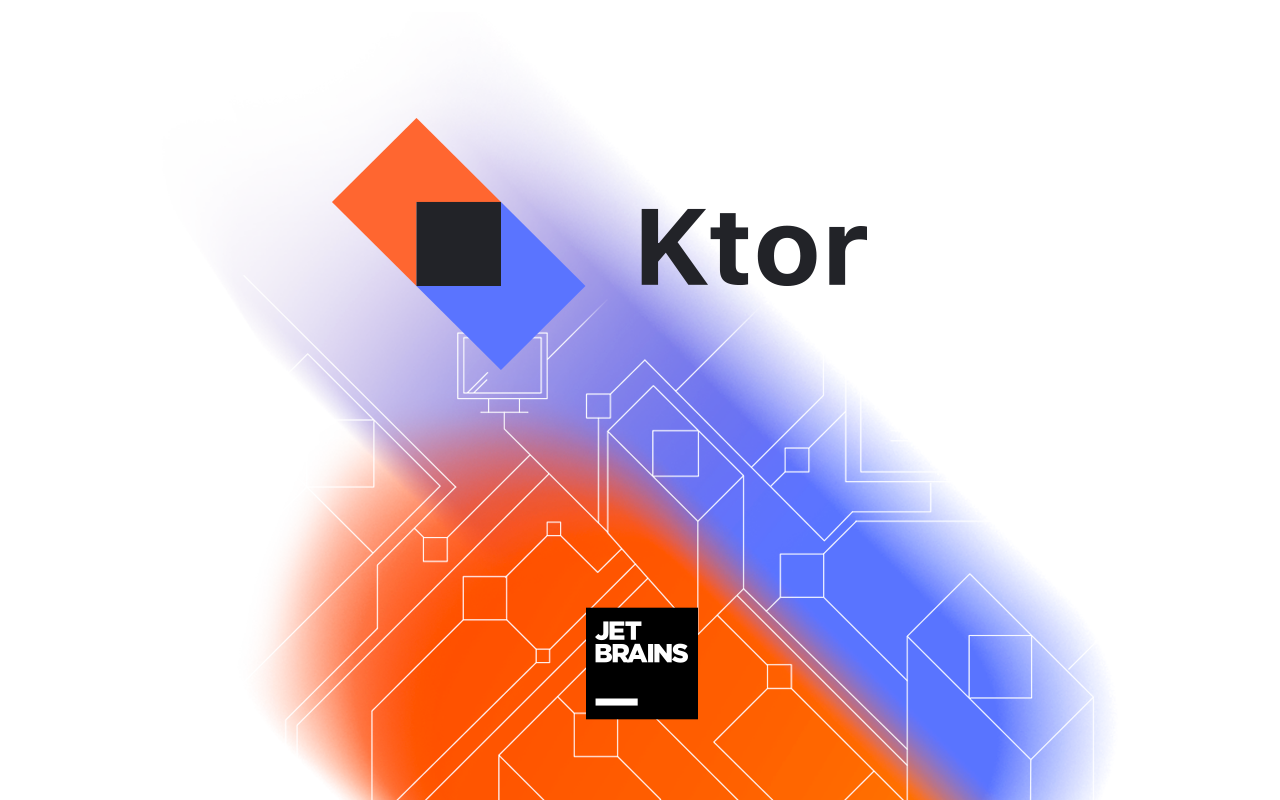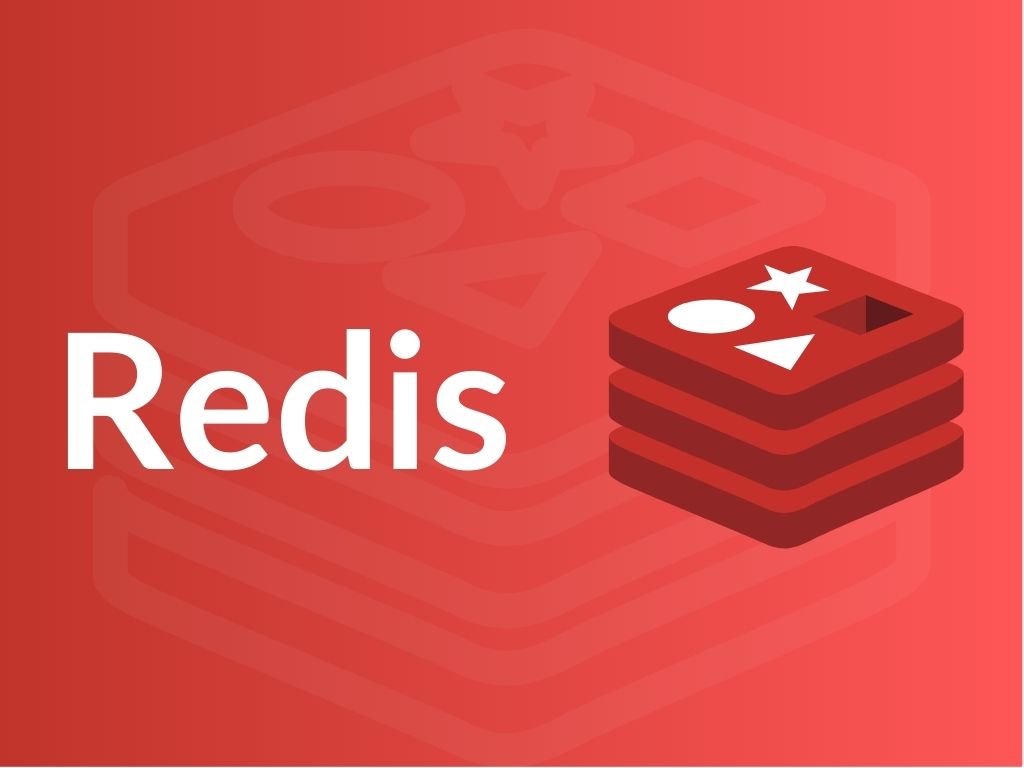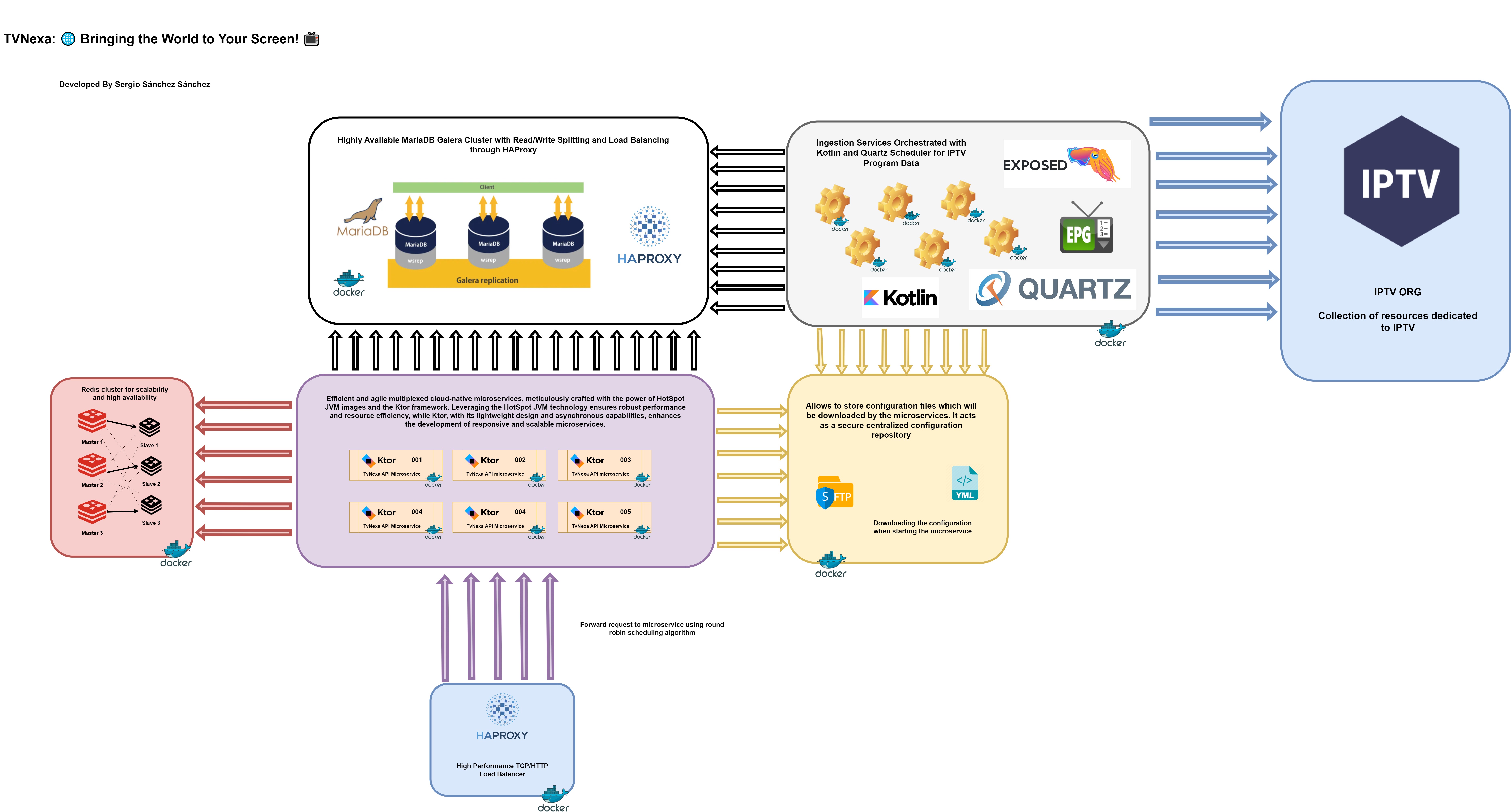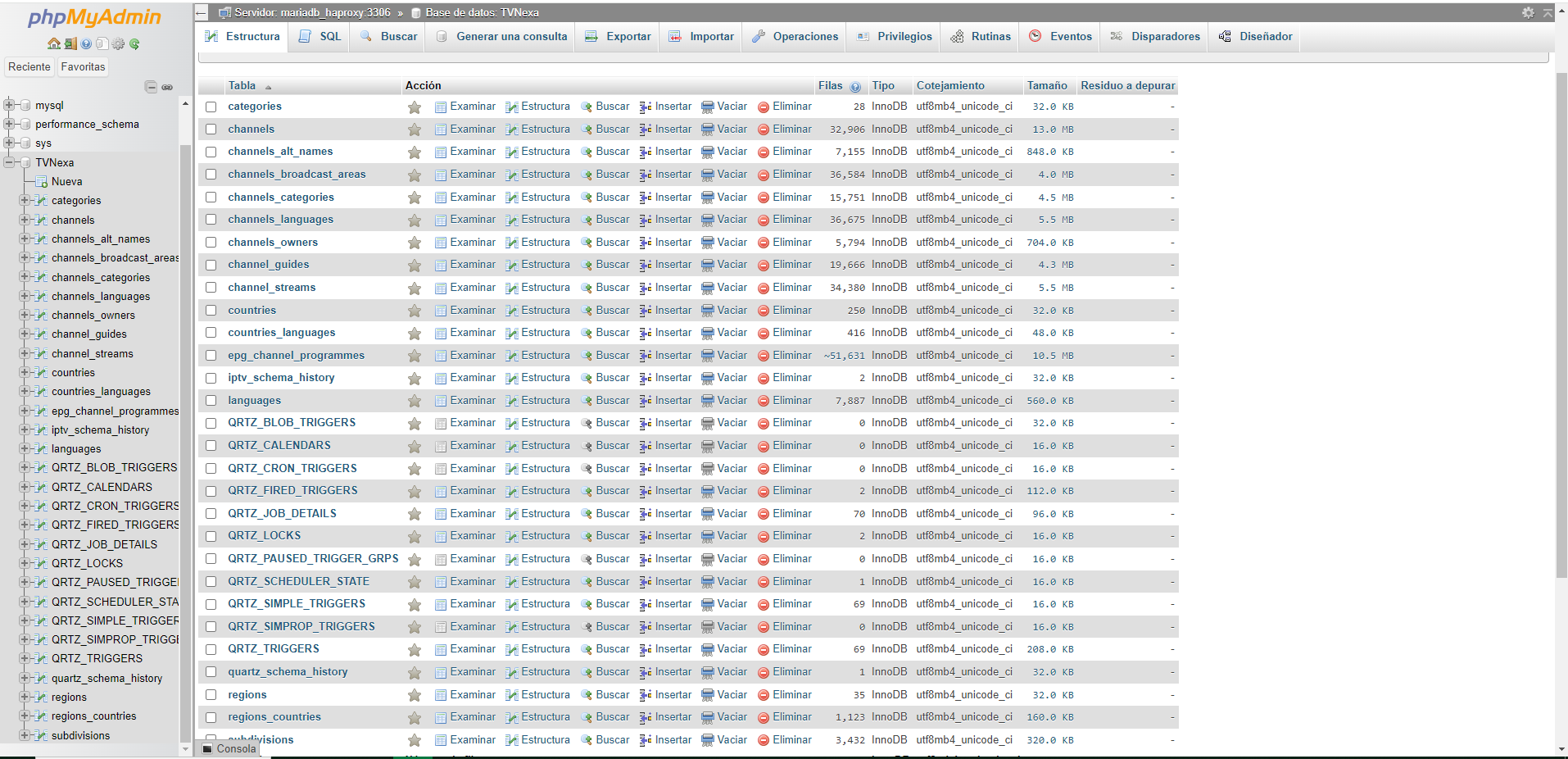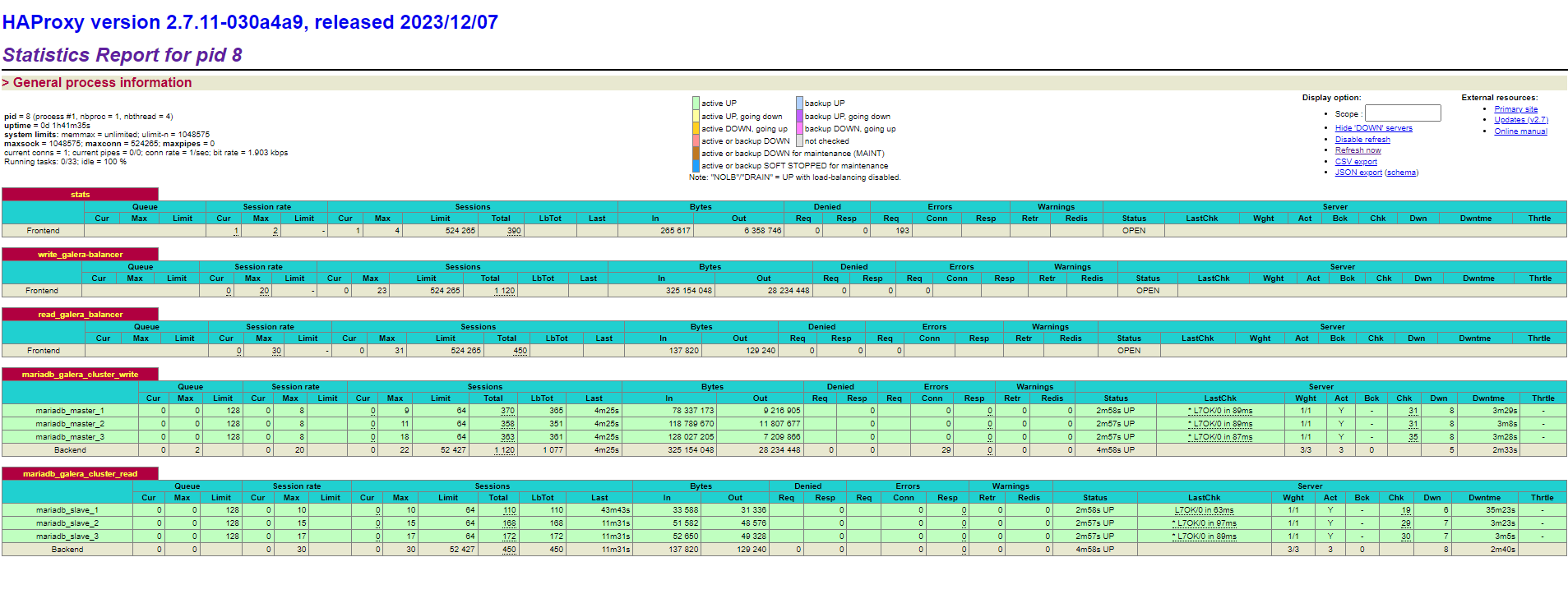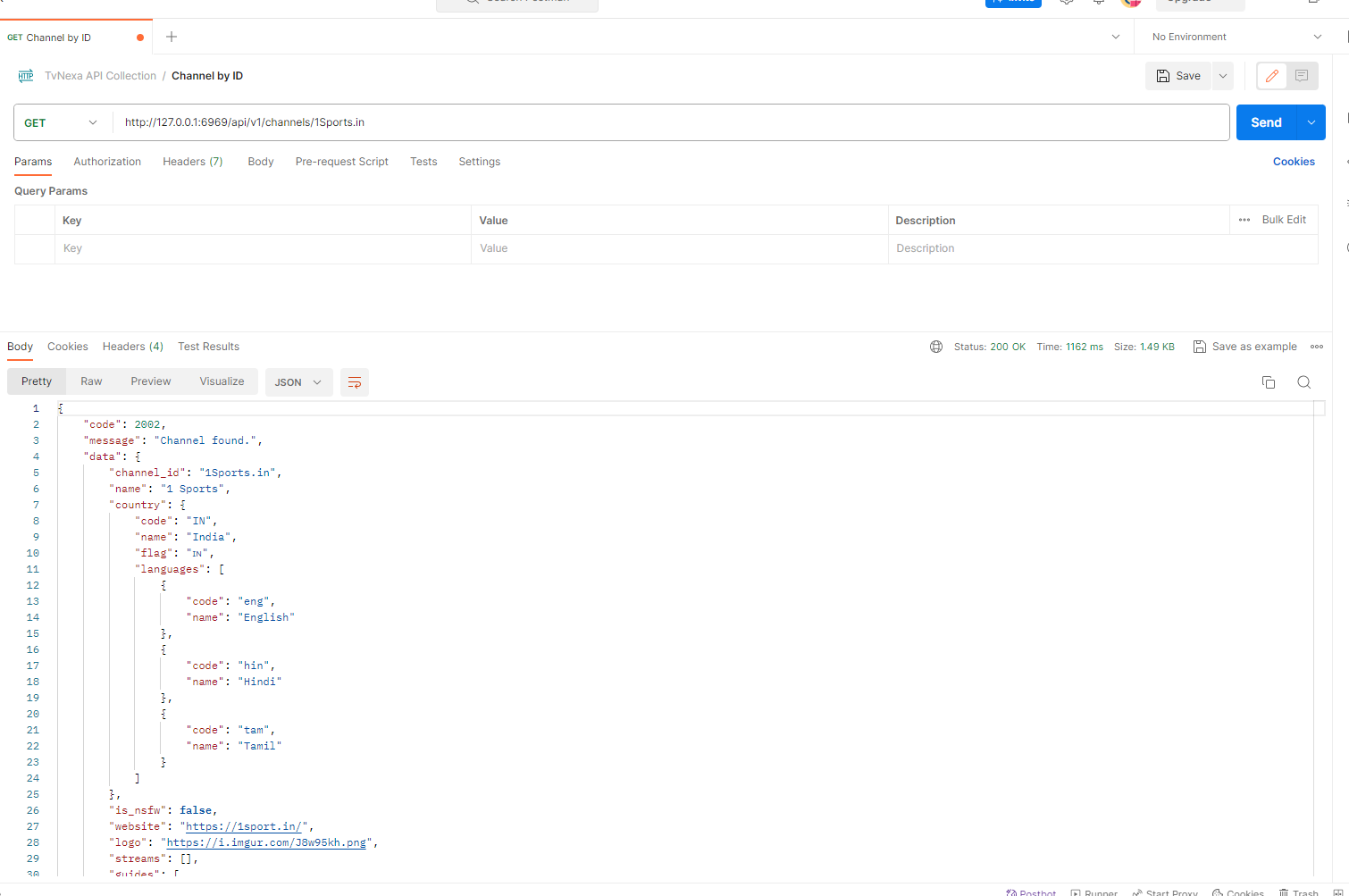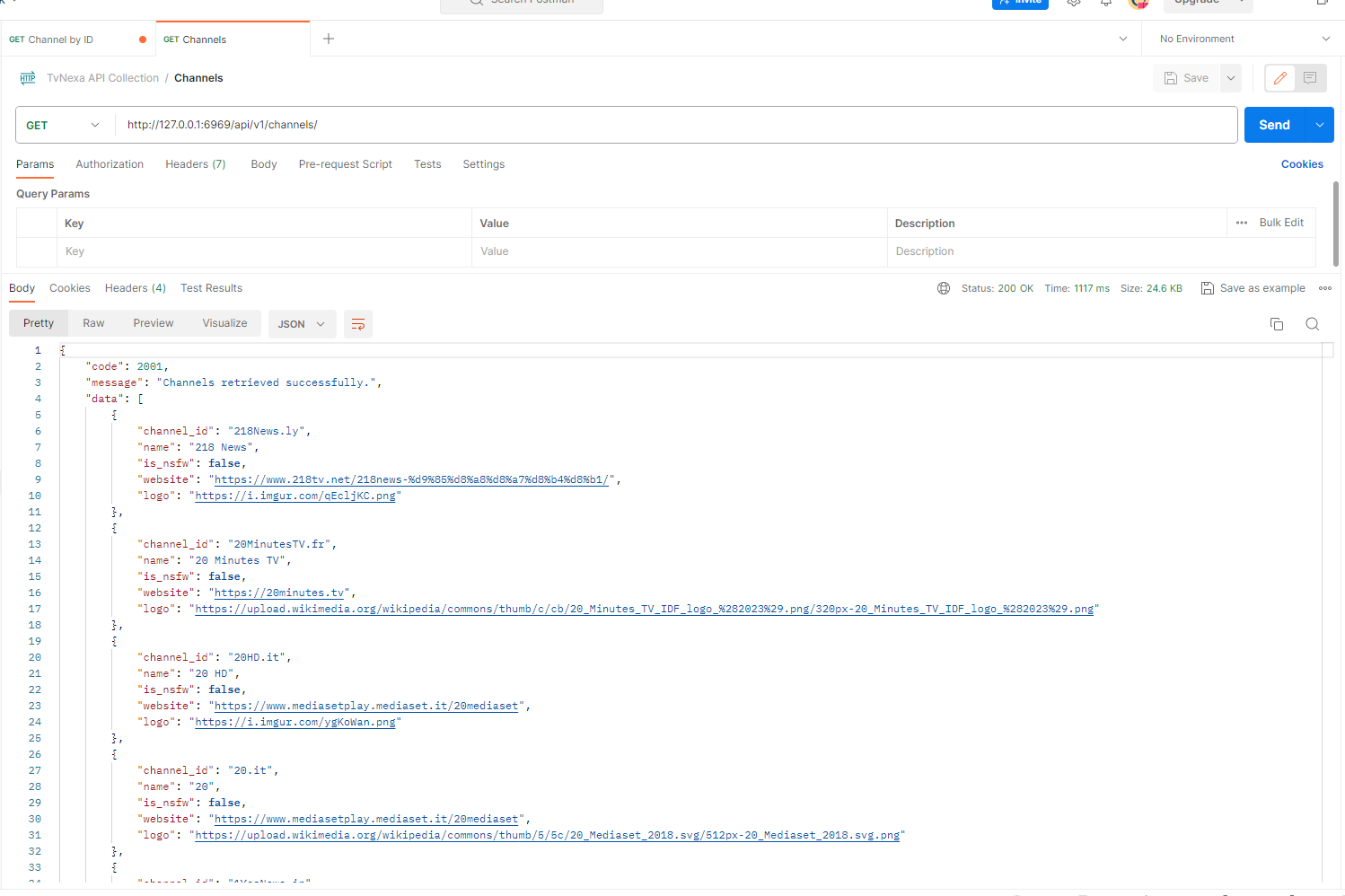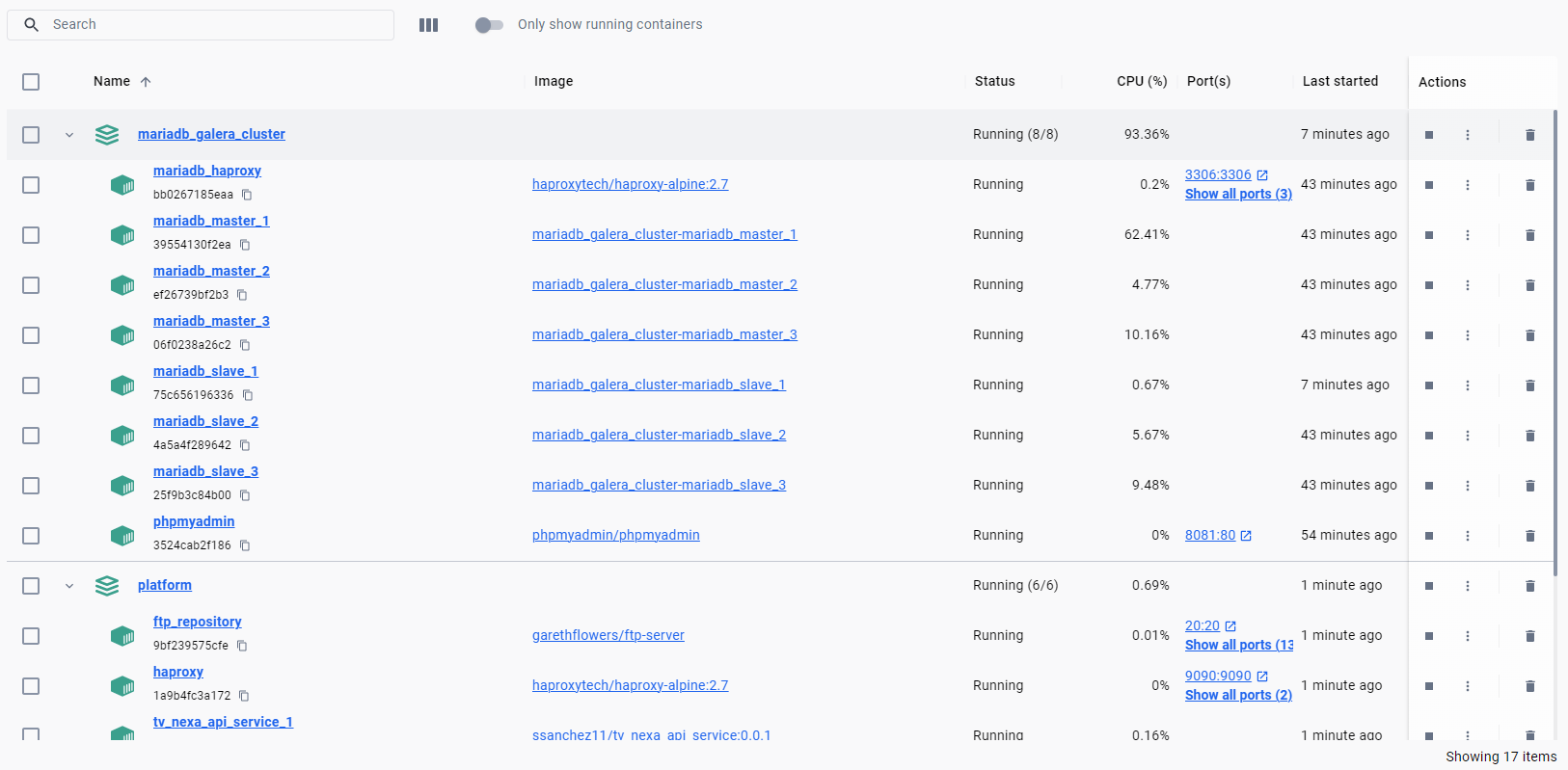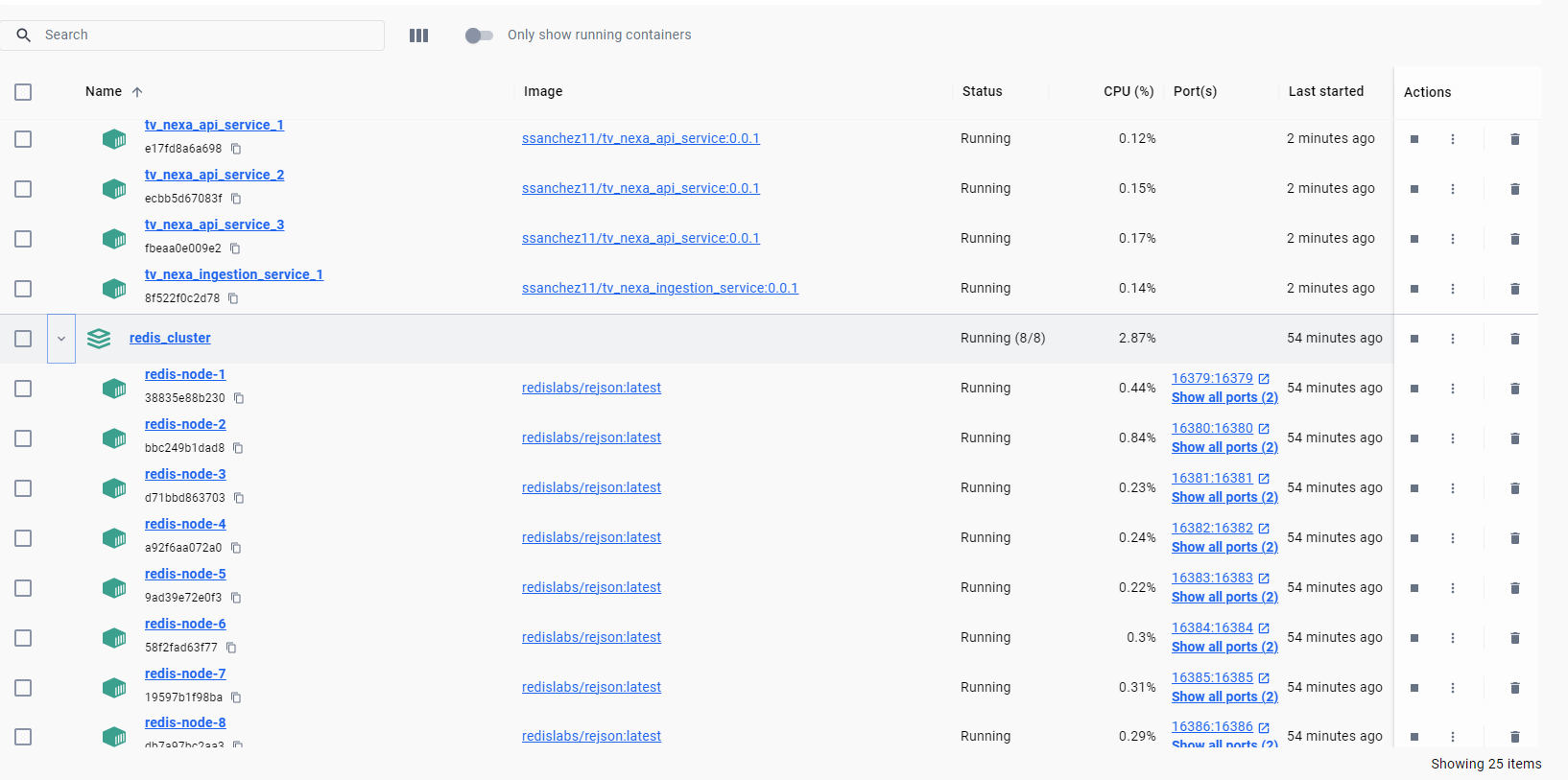TVNexa 🌐 is an innovative online television platform that allows you to explore a diverse universe of television channels from around the world. With access to a wide range of IPTVs, TVNexa offers you the freedom to tune in and enjoy content from countries across the globe. Immerse yourself in a unique streaming experience where you can discover exciting programs and diverse cultures, all from the comfort of your device. TVNexa: Your gateway to the world of IPTVs and global television. 📺✨
- 📺 Extensive Channel Library: Explore an extensive collection of television channels from diverse countries and regions, offering an array of entertainment options.
- 🌟 Diverse Content: Immerse yourself in a rich array of programs encompassing various languages, genres, and categories, catering to diverse audience preferences.
- 📋 Integration of Guide Information: TVNexa seamlessly integrates detailed program information from electronic program guides (EPG) for thousands of TV channels, ensuring an enriched viewing experience.
- 💾 Efficient Data Storage and Retrieval:
- ⏰ Quartz Jobs: Utilizes Quartz Jobs to seamlessly integrate and manage data retrieval processes, ensuring timely and accurate information updates.
- 🔒 MariaDB Galera with Jetbrains Exposed: Stores integrated data efficiently in a secure MariaDB Galera cluster using Jetbrains Exposed for robust data handling and management.
- 🚀 Optimized API with Ktor and Redis Cluster: Develops a highly optimized API utilizing the Ktor framework for rapid and efficient data retrieval, supported by Redis Cluster as a caching system to enhance performance.
The architecture of TVNexa is designed to provide a robust and efficient framework for handling diverse television content from around the world. Here's an overview of the key components and their interactions:
-
Quartz Jobs for EPG Integration 🕒:
- Quartz Jobs are employed to manage the integration of electronic program guide (EPG) data into the TVNexa platform.
- These jobs are responsible for retrieving detailed program information from various sources and storing it in the MariaDB Galera cluster.
-
MariaDB Galera Cluster with Jetbrains Exposed 🗃️:
- TVNexa utilizes a MariaDB Galera cluster for efficient and secure data storage.
- Jetbrains Exposed, an SQL library, is integrated to manage data storage and retrieval within the MariaDB Galera cluster.
-
API Development with Ktor 🚀:
- The API layer is developed using the Ktor framework, a highly optimized framework for building asynchronous and scalable applications.
- This API facilitates rapid and efficient data retrieval from the MariaDB Galera storage to serve end-users.
-
Redis Cluster for Caching 🔄:
- Redis Cluster is implemented as a caching system to enhance the performance of data retrieval through the Ktor API.
- Caching helps in providing lightning-fast responses to user queries by storing frequently accessed data.
-
Read and Write Clusters 📚🖊️:
- The storage environment is divided into Read and Write clusters to optimize data access.
- The Read Cluster is used primarily by the information reading component via the Ktor API, allowing quick and efficient access to data for end-users.
- The Write Cluster is employed by the ingestion component to store data from Quartz Jobs, handling write operations to update and enrich the database.
This architecture is meticulously designed to handle the complexities of managing a diverse range of television content, ensuring a seamless and enriching experience for users on the TVNexa platform.
TVNexa integrates comprehensive electronic program guide (EPG) data seamlessly into its platform. This integration process is handled by Jobs managed by Quartz, a robust job scheduling framework known for its reliability and scalability. These Quartz Jobs efficiently retrieve and store information in a MariaDB Galera cluster utilizing Jetbrains Exposed for streamlined data management.
Additionally, TVNexa has developed an API powered by the Ktor framework, ensuring high-performance and rapid access to stored information. This API utilizes Redis Cluster as a caching system, enabling lightning-fast data retrieval from the MariaDB Galera storage.
The data ingestion process in TVNexa is a fundamental component designed to keep the platform updated and enriched with relevant information from various external sources. This operation is structured into a series of Jobs configured to fulfill specific responsibilities, ensuring the correct collection, integration, and storage of data.
Each Job within the ingestion process has a clearly defined responsibility and sets logical constraints to ensure information coherence. For instance, the Job responsible for channel ingestion requires the successful execution of other specific Jobs.
This guarantees that essential information, like languages, categories, and subdivisions, is previously stored before channel ingestion, ensuring data integrity and coherence.
Ingestion Jobs are configured to run at different time intervals based on the criticality and update frequency of data from external endpoints. This strategy ensures that the platform's information stays up-to-date efficiently and timely.
The TVNexa platform features two distinct storage environments:
-
Read Cluster: Utilized by the information reading component, primarily via the Ktor API. This environment allows access to data in read-only mode to provide information to end-users quickly and efficiently.
-
Write Cluster: Employed by the ingestion component to store data from the Jobs. This part of the system handles write operations to update and enrich the database with the most recent information obtained from external endpoints.
- Maintaining Updated Data: Ensures that the information provided to users is current, accurate, and comprehensive.
- Data Integrity: Guarantees coherence and quality of stored data by setting dependencies between Jobs and verifying prerequisites before critical information ingestion.
- Optimization of User Experience: Allows users to access updated and relevant information through the Ktor API with fast and efficient response times.
The ingestion process in TVNexa is meticulously configured to ensure continuous information updates and provide an optimal and enriching user experience.
- Quartz Jobs: Framework renowned for its reliability and scalability in managing job scheduling processes.
- MariaDB Galera with Jetbrains Exposed: Utilizes Jetbrains Exposed, an SQL library, to manage data storage and retrieval within a MariaDB Galera cluster.
- Ktor Framework: Empowers the highly optimized API for rapid and efficient data retrieval. 💡
- Redis Cluster: Implements Redis Cluster as a caching system for optimizing data retrieval through the API. 🔄
TVNexa integrates data from various sources to provide a comprehensive television viewing experience. The platform accesses and integrates detailed information from:
- 📺 Channels: Access detailed channel information from IPTV sources.
- 📡 Streams: Retrieve streaming URLs for channels and additional metadata.
- 📋 Guides: Obtain guides for channels, including site domain, site ID, site name, and guide language.
- 🗂️ Categories, Languages, Countries, Subdivisions, Regions: Access additional datasets for categories, languages, countries, subdivisions, and regions.
For more information on the data sources, refer to the GitHub repository.
The available tasks are detailed below (rake --task)
| Task | Description |
|---|---|
tvnexa:login |
Authentication with existing credentials using Docker. |
tvnexa:cleaning_environment_task |
Environment cleaning: removes Docker images and volumes. |
tvnexa:status |
Shows the status of containers using docker-compose ps. |
tvnexa:deploy |
Deploys platform containers and launches all services and daemons necessary for proper functionality. |
tvnexa:undeploy |
Undeploys platform services using docker-compose down -v. |
tvnexa:check_docker_task |
Checks Docker and Docker Compose availability in the system PATH, showing their versions. |
tvnexa:galera:check_deployment_file |
Checks the existence of the MariaDB Galera Cluster deployment file. |
tvnexa:galera:start |
Starts MariaDB Galera Cluster and HAProxy containers. |
tvnexa:galera:stop |
Stops MariaDB Galera Cluster and HAProxy containers. |
tvnexa:redis:check_deployment_file |
Checks the existence of the Redis Cluster deployment file. |
tvnexa:redis:start |
Starts and configures Redis Cluster containers. |
tvnexa:redis:stop |
Stops Redis Cluster containers. |
tvnexa:platform:check_deployment_file |
Checks the existence of the platform deployment file. |
tvnexa:platform:start |
Starts platform Hotspot JVM containers. |
tvnexa:platform:stop |
Stops platform Hotspot JVM containers. |
tvnexa:platform:build_image |
Builds Docker images based on Hotspot JVM for specific microservices, uploads them to Docker Hub, and shows the list of available images. |
To start the platform make sure you have Ruby installed, go to the root directory of the project and run the rake deploy task, this task will carry out a series of preliminary checks, discard images and volumes that are no longer necessary and also proceed to download all the images and the initialization of the containers.
In this table, you can view the ports assigned to each service for accessing web tools or other monitoring purposes.
| Service | Port(s) | Description |
|---|---|---|
| haproxy | 9090, 9191 (HAProxy stats) | Load balancer for API services |
| ftp_repository | 20, 21, 22, 40000-40009 (passive mode range) | FTP configuration repository |
| tv_nexa_api_service_1 | (No specific ports exposed) | API service #1 |
| tv_nexa_api_service_2 | (No specific ports exposed) | API service #2 |
| tv_nexa_api_service_3 | (No specific ports exposed) | API service #3 |
| redis-node-1 | 6379 (6379), 16379 | Redis Node 1 |
| redis-node-2 | 6380 (6380), 16380 | Redis Node 2 |
| redis-node-3 | 6381 (6381), 16381 | Redis Node 3 |
| redis-node-4 | 6382 (6382), 16382 | Redis Node 4 |
| redis-node-5 | 6383 (6383), 16383 | Redis Node 5 |
| redis-node-6 | 6384 (6384), 16384 | Redis Node 6 |
| redis-node-7 | 6385 (6385), 16385 | Redis Node 7 |
| redis-node-8 | 6386 (6386), 16386 | Redis Node 8 |
| mariadb_master_1 | (No specific ports exposed) | MariaDB Master Node 1 |
| mariadb_master_2 | (No specific ports exposed) | MariaDB Master Node 2 |
| mariadb_master_3 | (No specific ports exposed) | MariaDB Master Node 3 |
| mariadb_slave_1 | (No specific ports exposed) | MariaDB Slave Node 1 |
| mariadb_slave_2 | (No specific ports exposed) | MariaDB Slave Node 2 |
| mariadb_slave_3 | (No specific ports exposed) | MariaDB Slave Node 3 |
| mariadb_haproxy | 8404, 3306, 3307 | HAProxy for MariaDB Cluster |
| mariadb_web_admin | 8081 | phpMyAdmin for MariaDB Cluster |
The following is a summary of key dependencies used in the infrastructure of our project. These libraries and modules play fundamental roles in various areas, from server authentication to integration with Quartz for scheduled tasks. Below is a detailed breakdown of each dependency and its specific function within the context of our project
| Dependency | Explanation |
|---|---|
io.ktor:ktor-server-auth-jvm |
Ktor server authentication module for the JVM. |
io.ktor:ktor-server-core-jvm |
Ktor server core module for the JVM. |
io.ktor:ktor-server-auth-jwt-jvm |
Ktor server JSON Web Token (JWT) authentication module for the JVM. |
io.ktor:ktor-server-content-negotiation-jvm |
Ktor server content negotiation module for the JVM. |
io.ktor:ktor-server-call-logging-jvm |
Ktor server call logging module for the JVM. |
io.ktor:ktor-server-call-id-jvm |
Ktor server call ID module for the JVM. |
io.ktor:ktor-server-conditional-headers-jvm |
Ktor server conditional headers module for the JVM. |
io.ktor:ktor-server-compression-jvm |
Ktor server response compression module for the JVM. |
io.ktor:ktor-server-caching-headers-jvm |
Ktor server caching headers module for the JVM. |
io.ktor:ktor-serialization-jackson |
Ktor serialization module using Jackson for the JVM. |
io.ktor:ktor-serialization-kotlinx-json-jvm |
Ktor serialization module using kotlinx.serialization and JSON for the JVM. |
io.ktor:ktor-server-netty-jvm |
Ktor server Netty module for the JVM. |
io.ktor:ktor-server-status-pages-jvm |
Ktor server status pages module for the JVM. |
io.ktor:ktor-server-request-validation |
Ktor server request validation module for the JVM. |
redis.clients:jedis |
Redis Java client designed for performance and ease of use. |
com.google.code.gson:gson |
Google Gson library for JSON serialization and deserialization. |
io.ktor:ktor-server-tests-jvm |
Ktor server tests module for the JVM, used for testing Ktor applications. |
io.insert-koin:koin-ktor |
Koin integration for Ktor. |
io.insert-koin:koin-logger-slf4j |
Koin logger integration with SLF4J. |
com.sksamuel.hoplite:hoplite-core |
A boilerplate-free Kotlin config library for loading configuration files as data classes. |
com.sksamuel.hoplite:hoplite-yaml |
Hoplite YAML support for configuration. |
org.jetbrains.exposed:exposed-core |
Exposed ORM core module. |
org.jetbrains.exposed:exposed-dao |
Exposed DAO module. |
org.jetbrains.exposed:exposed-jdbc |
Exposed JDBC module. |
org.jetbrains.exposed:exposed-java-time |
Exposed Java Time extension. |
org.mariadb.jdbc:mariadb-java-client |
MariaDB Java client. |
com.zaxxer:HikariCP |
HikariCP connection pool. |
org.flywaydb:flyway-core |
Flyway database migration library - core. |
org.flywaydb:flyway-mysql |
Flyway database migration library - MySQL extension. |
com.h2database:h2 |
H2 Database Engine. |
commons-net:commons-net |
Apache Commons Net library. |
commons-io:commons-io |
Apache Commons IO library. |
ch.qos.logback:logback-classic |
Logback Classic module for logging. |
com.fasterxml.jackson.module:jackson-module-kotlin |
Jackson module for Kotlin support. |
com.fasterxml.jackson.dataformat:jackson-dataformat-xml |
Jackson data format module for XML support. |
org.quartz-scheduler:quartz |
Quartz scheduler library for CRON jobs. |
This collection of dependencies forms the backbone of our infrastructure, providing essential functionalities for development, communication, data persistence, and scheduling periodic tasks in the project.
As follow, I include some images that help us to understand the performance of each part of system
All information is stored in the MariaDB Galera Cluster, the information is replicated between several nodes, read-only operations are served by the group of reading nodes that receive the information from the master group.
The relational model ensures the integrity of the stored data.
With the PhpMyAdmin tool as you can see below it is possible to manipulate and manage the different tables and their content
In the context of the MariaDB Galera cluster, HAProxy plays a central role as a load balancer. Its primary function is to evenly distribute read and write requests among the cluster nodes, enhancing scalability and availability. It provides a fault-tolerance layer by directing traffic to healthy nodes, ensuring uninterrupted operation even in failure scenarios.
In the microservices API infrastructure, HAProxy serves a similar load-balancing role. It distributes client requests across multiple instances of microservices, optimizing performance and enabling horizontal scalability. Its presence contributes to the resilience of the API, ensuring an efficient and robust experience for end-users.
Postman plays a crucial role in TVNexa's development and testing processes. It serves as a comprehensive API development environment, allowing developers to design, test, and document APIs seamlessly. Postman simplifies the creation of API requests, enabling quick testing of different endpoints and ensuring their functionality.
Additionally, Postman supports the automated testing of APIs, providing a platform for creating and running test suites. This ensures that TVNexa's APIs meet the expected standards and behave consistently across various scenarios. As a collaborative tool, Postman enhances the efficiency of the development team by facilitating communication, sharing API specifications, and streamlining the testing and debugging processes.
Docker Compose is a fundamental component in TVNexa's infrastructure, serving as a container orchestration tool that simplifies the deployment and management of microservices. In TVNexa's distributed architecture, Docker Compose is utilized to define and configure multi-container environments, ensuring consistency across various services.
With Docker Compose, TVNexa can efficiently define the interdependencies of its microservices, specifying the configuration of each containerized service in a single file. This not only simplifies the deployment process but also enables the seamless scaling of services as needed. Docker Compose enhances the maintainability and reproducibility of TVNexa's deployment, allowing the team to focus on developing and improving individual microservices while ensuring they work harmoniously within the overall system.
To deploy and launch the TVNexa platform, you can follow these straightforward steps:
- Make sure you have Ruby installed on your system.
- Check the availability of Docker and Docker Compose in your system's PATH. If not installed, follow the official Docker installation guide and Docker Compose installation guide.
Clone the TVNexa repository to your local machine using the following command:
git clone https://github.com/sergio11/tvnexa_architecture.gitMove into the project directory with:
cd tvnexa_architectureExecute the deployment task using the following command:
rake tvnexa:deployThis task will perform preliminary checks, clean unnecessary images and volumes, and download required images while initializing the containers.
Ensure that the platform is up and running by checking the status of containers:
rake tvnexa:statusThis will display the current status of the deployed containers.
Once the containers are running, you can access the TVNexa platform through your web browser or using Postman Tool importing the collection which I prepared for this project. Check the specific ports assigned to each service in the "Containers Ports" section of the README to access different components.
You are now ready to explore the diverse world of IPTVs and global television through TVNexa. Navigate through channels, streams, and guides, and enjoy an enriched viewing experience.
Contributions to TvNexa are highly encouraged! If you're interested in adding new features, resolving bugs, or enhancing the project's functionality, please feel free to submit pull requests.
TvNexa Architecture is developed and maintained by Sergio Sánchez Sánchez (Dream Software). Special thanks to the open-source community and the contributors who have made this project possible. If you have any questions, feedback, or suggestions, feel free to reach out at dreamsoftware92@gmail.com.









